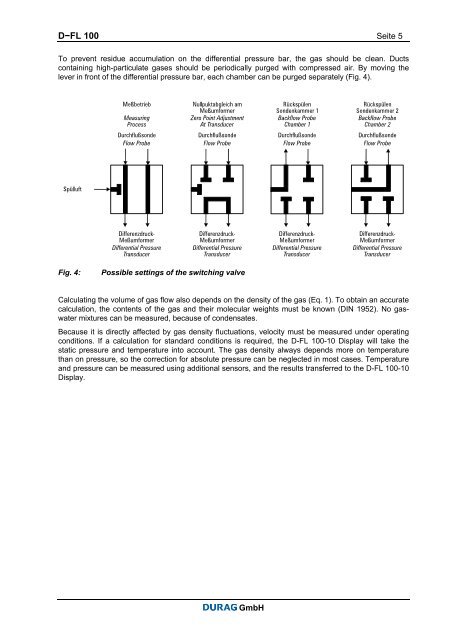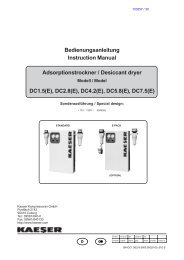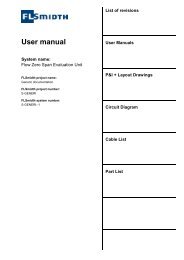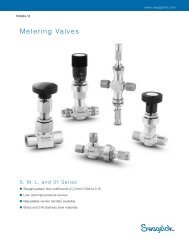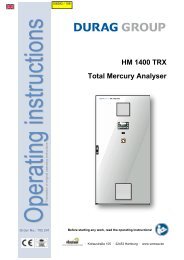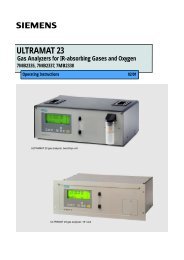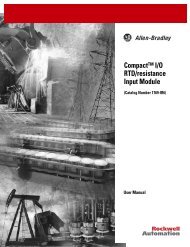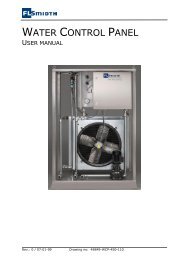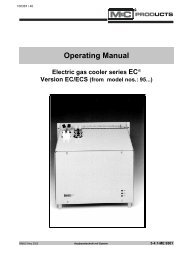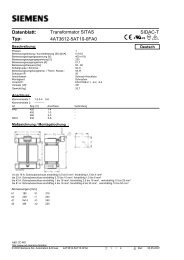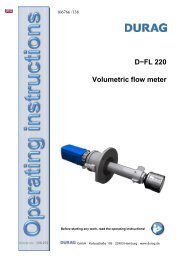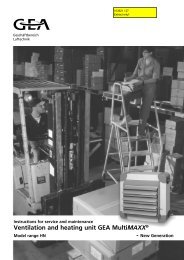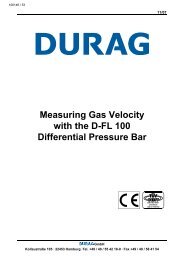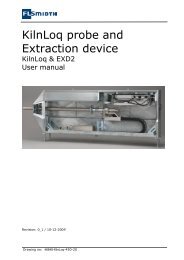Measuring Gas Velocity with the D-FL 100 Differential Pressure Bar
Measuring Gas Velocity with the D-FL 100 Differential Pressure Bar
Measuring Gas Velocity with the D-FL 100 Differential Pressure Bar
- No tags were found...
Create successful ePaper yourself
Turn your PDF publications into a flip-book with our unique Google optimized e-Paper software.
D−<strong>FL</strong> <strong>100</strong> Seite 5To prevent residue accumulation on <strong>the</strong> differential pressure bar, <strong>the</strong> gas should be clean. Ductscontaining high-particulate gases should be periodically purged <strong>with</strong> compressed air. By moving <strong>the</strong>lever in front of <strong>the</strong> differential pressure bar, each chamber can be purged separately (Fig. 4).Fig. 4:Possible settings of <strong>the</strong> switching valveCalculating <strong>the</strong> volume of gas flow also depends on <strong>the</strong> density of <strong>the</strong> gas (Eq. 1). To obtain an accuratecalculation, <strong>the</strong> contents of <strong>the</strong> gas and <strong>the</strong>ir molecular weights must be known (DIN 1952). No gaswatermixtures can be measured, because of condensates.Because it is directly affected by gas density fluctuations, velocity must be measured under operatingconditions. If a calculation for standard conditions is required, <strong>the</strong> D-<strong>FL</strong> <strong>100</strong>-10 Display will take <strong>the</strong>static pressure and temperature into account. The gas density always depends more on temperaturethan on pressure, so <strong>the</strong> correction for absolute pressure can be neglected in most cases. Temperatureand pressure can be measured using additional sensors, and <strong>the</strong> results transferred to <strong>the</strong> D-<strong>FL</strong> <strong>100</strong>-10Display.GmbH


